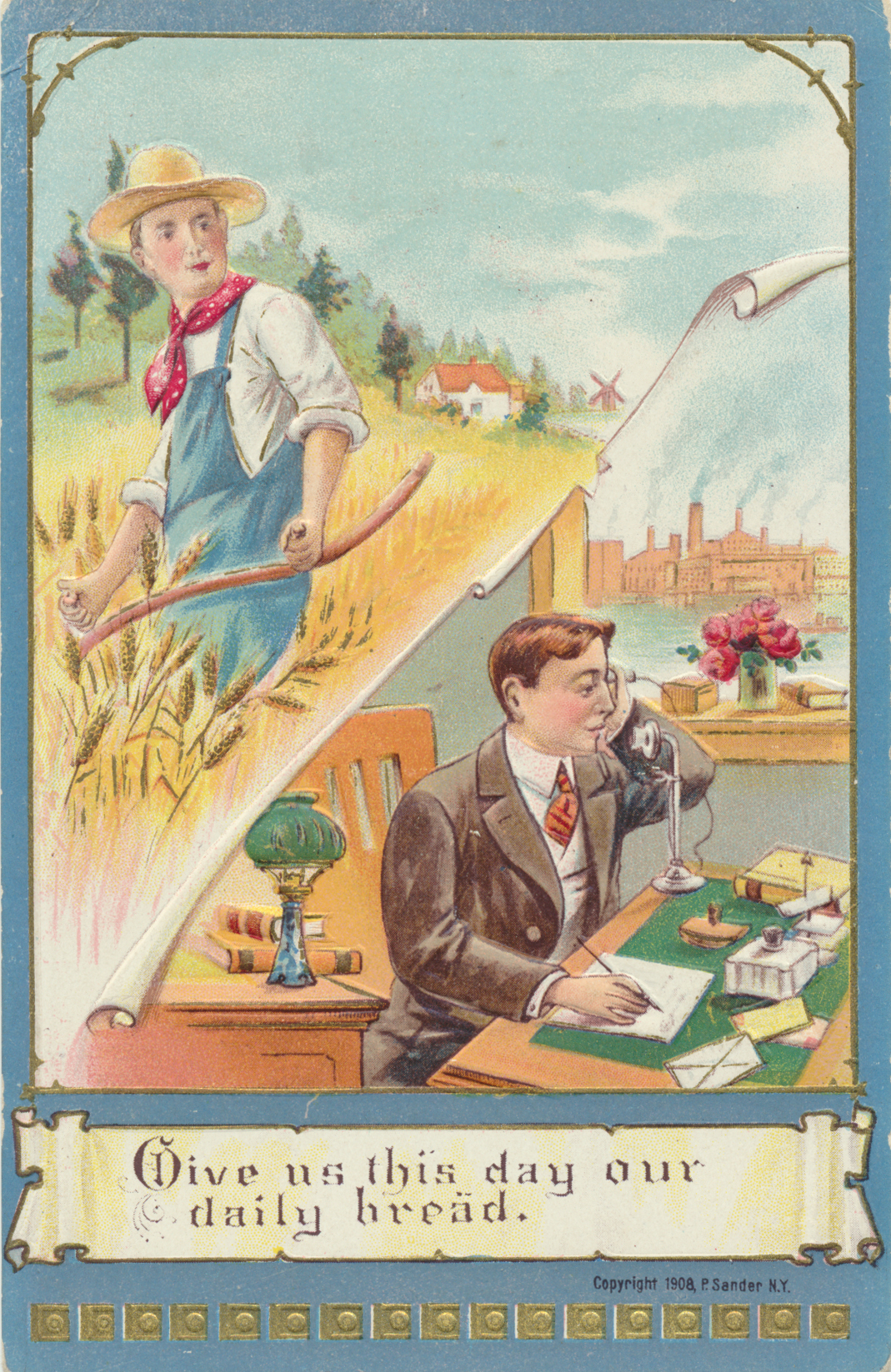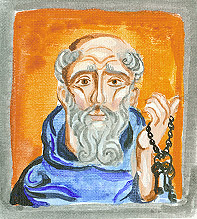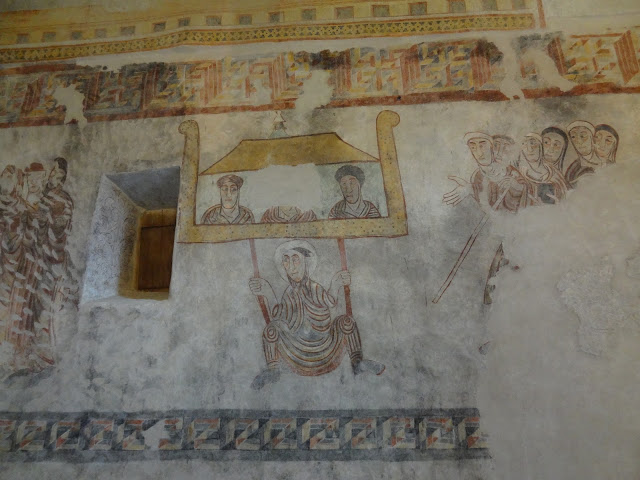Today is a snow day, but before I get suited up for shoveling the white stuff, I’ll share a bit of Christian material culture that I picked up last week.
This postcard is one of a series printed in 1908 by Philip Sander. Postcard sets of The Lord’s Prayer and The Ten Commandments were popular during the early 20th century. Each card would depict a different petition or commandment so that a person could collect or send the entire set.
Such cards are still fairly common out in the world of ephemera collectors, and you can pick them up for not too much money if you’re interested. I’m fascinated by the way they reveal the values and assumptions of religious people in an earlier age. With one foot in the world of religion and the other in the world of commerce, these cards may not show the church’s official positions, but as images that were marketed and purchased, they can tell us a lot. A successful postcard has an easily understood, high-impact image. A viewer ought to be able to take it all in quickly and feel something that makes them want to share (that is, buy and send) the postcard. They’re are a lot like today’s social media in that respect.
I was drawn to this particular postcard because, instead of showing us people eating, this one presents two different ways to earn our daily bread. It’s more complicated than just “provide us food.” There’s the farmer harvesting wheat, and the businessman talking on the phone with factories that are likely intended to represent flour mills in the background. It’s a country life/city life juxtaposition that speaks to the urbanization of America which had been taking place since the 19th century; and it unites the two men by depicting the farm-to-mill chain of production.
Unlike the pictures of people saying grace at the table (which are often quite lovely), or the sentimental images of angels feeding destitute children, this Lord’s Prayer postcard clearly shows people working for their daily bread. “Give us our daily bread” becomes “Reward our daily labors with bread.” The card doesn’t tug at the heart strings, but it does convey the ideas that “work is noble” and “work is important.” It all feels very American and very Protestant.
There’s a lot to like about this card, though I can’t really call it art. The curls on the dividing line are a nice touch that give an impression of time, and I like all the detailed office supplies on the desk. And then there are the roses on the windowsill adding a touch of beauty to that skyline of factory smoke!



















